Silson Lenormad Guidebook
|
i. Primary Images |
|
The 36 primary images within the Lenormand deck have remained unchanged since The Game of Hope was first published. While a number of cards sometimes bear different names. e.g. ‘Crossroads’ for Paths, or ‘Park’ for Carden, the sequence of images has remained consistent for over two hundred years - a remarkable survival. In recent years, thorough and valuable research has been carried out on the sources for Hechtel’s own choice of images. Sufficient evidence now exists to confirm that The Game of Hope itself drew heavily upon earlier fortune telling coffee cards. These coffee cards incorporated many of the images handed down to us - or at least used images which are very similar to those adopted by all subsequent Lenormand decks. At least one set of 32 cards from 1794 includes many familiar images - although these appear in a different numerical sequence from that adopted by The Game of Hope. So it now appears to be beyond doubt that Hcchtcls own deck drew its inspiration from an earlier deck or decks, rather than being a completely original invention. |
|
The credible history which has been built for the deck discounts the theory that there exists any secret philosophy or system embedded within it. Although some have tried to assign astrological or cabbalistic associations to it, these attempts are largely exercises in post-rationalisation. It is sometimes worth remembering that Lenormand was originally just a game. Throughout this guide I refer to the pictures on the cards as images, rather than symbols. Unlike Tarot, Lenormand contains neither symbols of the virtues - Temperance, Fortitude, Justice - nor symbols which require religious or cultural explanation, such as The Hanged Man or The Wheel of Fortune. Lenormand cards simply show images. The cards are therefore easier to understand by any reader, regardless of cultural background. Lenormand decks are not divided into different schools. In this respect, Lenormand is very unlike Tarot. The same card within different Tarot decks can, and often does, carry quite different meanings. For example, a specific Tarot card’s meaning depends heavily on whether it has been drawn from an early Marseille deck, a Golden Dawn variant, or Aleister Crowley s later Thoth deck. |
|
Lenormand is entirely free of this complexity The primary images on Lenormand cards |
|
than symbolically. It is important to recognise |
|
first learning to read Lenormand. |
|
and metaphors, this adjustment can sometimes require some effort. It is certainly helpful to put aside at an early stage familiar meanings of those images which are common to both Lenormand and Tarot. The Tower and 1 he Sun in a Lenormand deck, for example, are not the same as The Tower and The Sun in a Tarot dec k Lenormand cardb should be treated as images and as the building blocks for creating miniatuii scripts or visual sentences. How these visual sentences are constructed and read is dcs< nkd in Section III of this guide, whei c a num I i <.i different card layouts are demonstrated. |
|
The meanings listed in the following section are all my own, and are not intended in any way to be definitive. They should, however, be sufficient for new readers to familiarise themselves with the basic meanings usually assigned to each card. Over time, as you become better acquainted with all the primary images, you will doubtless develop your own intuitive associations with specific cards. In an attempt to make meanings easier to remember, I have also assigned a single keyword to each card. Again, these keywords are my own suggestions and should not necessarily be taken as definitive. |
|
“News.” News of some |
|
1. Rider. |
|
2. Clover. |
|
“Luck.” A welcome bonus, A windfall, a lucky |
|
“Movement. A journey, which could be spiritual as well as physical The card frequently indicates a foreign influence. Adventure, travel long distances, a rite of passage, a large vehicle or vessel |
|
3. Ship. |
|
“Home.” The enquirer s own |
|
4. House. |
|
5. Tree. |
|
“Health.” Physical and spiritual Nature, nurture, |
|
6. Clouds. |
|
“Doubt.” Uncertainty, Vagueness, indecision, |
|
7. Snake. |
|
"Betrayal” Treachery, twisted |
|
“Conclusion.” The necessary end Cancellation, stagnation, terminal |
|
8. Coffin. |
|
“Delight.” Sweet and graceful Happiness, charm, |
|
10. Scythe. |
|
“Cutting.” |
|
11. Whip. |
|
“Conflict.” A dash, where the Sometimes, physical Argument, culture |
|
“Chatter.” Small talk or gossip. Conversation, |
|
12. Birds. |
|
13. Child. |
|
xw. |
|
14. Fox. |
|
“Innocence.” Usually the enquirer’s Inexperience, “Trickery.” A sly, ingenious Often, a devious work colleague. Craftiness, |
|
“Strength.” Power, weight, |
|
15. Bear. |
|
“Direction.” Signs or signals Clarity, navigation, |
|
16. Stars. |
|
il |
|
“Progress.” |
|
17. Stork. |
|
18. Dog. |
|
. “Loyalty.” Friendship and trust. A reliable close Honesty, support, assistance, intimacy, |
|
* i |
|
“Authority.” An institution * Law and order, tax. |
|
19. Tower. |
|
“Society. A place where people meet. Nowadays, this can indicate social networks as often as a physical place. Meetings. clubs, parties, reunions, conferences teamwork, the countryside. |
|
20. Garden. |
|
“Obstruction.” An obstacle which Challenge^ delay, |
|
21. Mountain. |
|
“Choice.” Called Crossroads Decision making, |
|
22. Paths. |
|
“Damage.” Disruption and Loss, theft, erosion, untidiness, dirt, |
|
23. Mice. |
|
“Love.” The enquirer’s own Feelings, passion, |
|
24. Heart. |
|
5P- |
|
tUlUlUS. |
|
“Partnership.” Coming together, Weddings, union, |
|
25. Ring. |
|
“Information.” Information coming Any printed or |
|
26. Book. |
|
|
|
“Correspondence.” newspapers, contracts, statements, cheques. |
|
27. Letter. |
|
z |
|
waiin. |
|
The enquirer, if the If the enquirer is This deck includes Please see note IV in |
|
28. Man. |
|
The enquirer, if the This deck includes |
|
30. Lily. |
|
“Maturity.” Wisdom and inner Serenity, wisdom, |
|
“Success. Positive power, Light, heat, |
|
31. Sun. |
|
32. Moon. |
|
“Intuition. Creativity and The subconscious, |
|
33. Key. |
|
“Solution.” success. Discovery, access, |
|
|
|
Enterprise.” |
|
Work, but |
|
particularly |
|
34 Fish. |
|
,. “^dence, ilexibilitv e . worker |
|
35. Anchor. |
|
“Stability.” Safety, settling down, |
|
wan. |
|
“Sacrifice.” A burden, of either a Physical or |
|
36. Cross. |


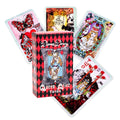
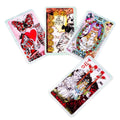
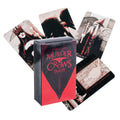
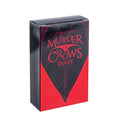
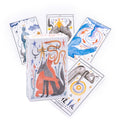

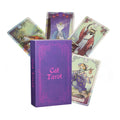
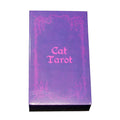



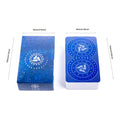
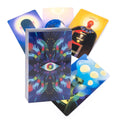
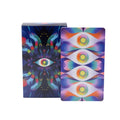
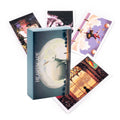
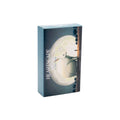

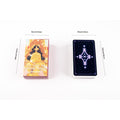

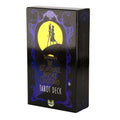
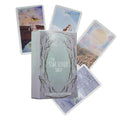
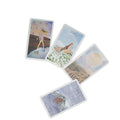
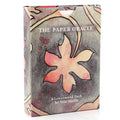

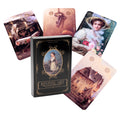
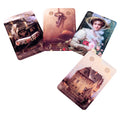
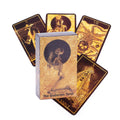
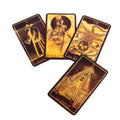
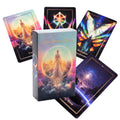

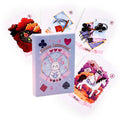
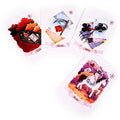
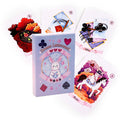
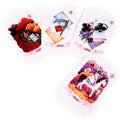
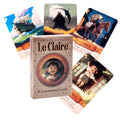
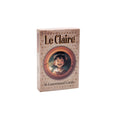
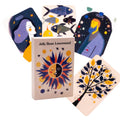

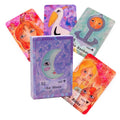
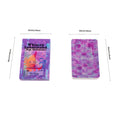
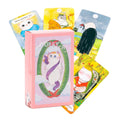

And by the way, I see no notes anywhere. I guess I’ll have to assume that the 2 different man and woman cards are simply positive and negative.
symbol /ˈsɪmb(ə)l /
▸ noun
1 a mark or character used as a conventional representation of an object, function, or process, e.g. the letter or letters standing for a chemical element or a character in musical notation:
the symbol r in Figure 5 represents a gene which is ineffective
the chemical symbol for helium is He.
▪ a shape or sign used to represent something such as an organization, e.g. a red cross or a Star of David:
the Red Cross symbol
the Star of David, the Jewish symbol.
2 a thing that represents or stands for something else, especially a material object representing something abstract:
the limousine was another symbol of his wealth and authority.
▸ verb
(symbols, symbolling, symbolled; US symbols, symboling, symboled)
[with object] archaic symbolize.
– ORIGIN late Middle English (denoting the Apostles’ Creed): from Latin symbolum ‘symbol, Creed (as the mark of a Christian)’, from Greek sumbolon ‘mark, token’, from sun- ‘with’ + ballein ‘to throw’.
From (ironically) the Oxford English Dictionary. Note what I highlighted. I read as far as seeing these objects called “images” as opposed to being symbols and I had to say something. I’m an artist with a degree, also a writer and professional Tarotist, and actually working on two of my own decks. I’ve been reading Tarot since 1978 at the age of 12 and have an extensive background in research and studying the Tarot. Having said that, I admit I’m not an expert on the Lenormand. I do have some familiarity with the original; at any rate, that’s neither here nor there because this is not about the deck as such, just an explanation of what the word “symbol” actually means. The Tarot is a collection of images comprised of symbols, such as keys and towers, etc. So in effect you actually have the definition backwards. The Lenormand is pared down and simple to read for that very reason – the imagery is comprised of a single simple symbol per card. They are objects with inherent symbolic meaning, like the letters that make up a sentence – which, oddly, is how the creator of my one and only Lenormand of the past 20 years, the Titania’s Oracle Deck, puts the idea. Read Jung to grasp this concept. If you have something that has a meaning beyond its mere existence, a meaning, it is, by definition, a symbol.